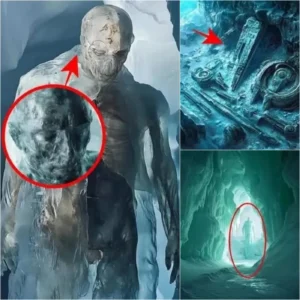Where is Atlantis the Lost City – and we don’t mean the waterpark? Beneath the shimmering depths of our oceans lies a timeless mystery that has captivated explorers, scholars, and dreamers for centuries: the elusive city of Atlantis. Whispers of an advanced civilization swallowed by the sea have tantalized our imaginations, sparking countless theories about its possible locations. From the sunken ruins off the coast of Santorini to the submerged landscapes near the Bahamas, the quest to unearth Atlantis has transcended the boundaries of geography and time. As we navigate the uncharted waters of history and science, the allure of discovering this enigmatic city continues to beckon, reminding us that even in the modern age, some secrets remain hidden beneath the waves.
SANTORINI ISLAND – GREECE
Many people believe that Atlantis was built on the island of Santorini (Thera) in the Mediterranean Sea. It was a Minoan civilisation that was definitely more advanced than many of its neighbours, as can be seen by the Minoan culture on other nearby islands, including Crete. Unfortunately for the Minoans or Atlanteans, the island was also a volcano which mega-erupted around 1600 BCE and literally blew itself into pieces. Goodbye island and goodbye to whatever civilisation was on the island. A likely contender, but the island was in the Mediterranean Sea and not the Atlantic, so there’s a problem there.

 Where is Atlantis the Lost City – Santorini
Where is Atlantis the Lost City – Santorini
DOÑANA NATIONAL PARK – SPAIN
Merlin Burrows is a UK based company that uses satellite technology to find ancient ruins. According to the CEO, Blackburn, his team used data taken from commercial satellites, such as Landsat 5 and Landsat 8 and identified a site in Spain’s Doñana National Park. National Geographic and other respectable publications have also pinpointed the site as a likely location. The problem is that while there are many archaeological remains, they’re not very Atlantean and currently bear little resemblance to the Atlantis of legend. They are also not on an island and not in the Atlantic. Interesting but no cigar.
THE EYE OF AFRICA

 Could Atlantis be the Eye of Africa?
Could Atlantis be the Eye of Africa?
Located in the deserts of Mauritania is a very large and ancient structure known as the eye of Africa. It is made up of concentric circles that almost look as if the ground liquidised and then solidified again during mid ripple. The concentric rings, saltwater deposits and what looks like a natural causeway do match some of the original descriptions but other than that its not likely. The lack of any serious archaeology or ancient technology scores against this as the location.
ALIEN SPACESHIP
This one is kind of interesting. Actually, Plato’s description of Atlantis is also a remarkable accurate depiction of a science fiction interstellar craft. Large, rings for stability, lots of strange metals and gates, and a collection of animals from around the region but not native to the island. Huge blasts of fire and the city disappears into the sky. Best place to land a giant spaceship without causing radiation damage – well that would be on the sea where it would look like a magical island. More about this idea in another article. Still … for this to work you have to believe that earth was visited by ancient aliens and that’s a whole new debate.

 Where is Atlantis the Lost City – Could it be a Spaceship?
Where is Atlantis the Lost City – Could it be a Spaceship?
OUR THEORY
Atlantis, according to Plato (Critias & Timaeus) was beyond the Pillars of Hercules or the Straits of Gibraltar. If we are to take the story literally then Atlantis is definitely not in the Mediterranean.
So, what do we know about Atlantis? It was an island, probably smaller than Southern Italy. It was somewhere in the Atlantic Ocean but close enough for its ships to pass the Straits of Gibraltar and enter the Mediterranean.
Its civilisation originated towards the end of the last Ice Age. Later, it had significant trade with other nations. There were elephants (imported?) and chestnut trees. It was close enough to Africa to be able to dominate the lands of Libya. Orichalcum could be mined on the island. It was probably volcanic. It was destroyed by an earthquake (volcanism).
If we accept that Plato’s description is accurate and don’t tamper with the story of Atlantis to make it fit other possible locations then we need to look for a volcanic island (or the remains of one) in the Atlantic beyond the straights of Gibraltar but close enough to North Africa for it to have been able to control the coastal lands of Libya up to the borders of Egypt.
If we faithfully follow this description, we do find an actual place. We find the volcanic Canary Islands. Quite a great deal of Plato’s description matches this location. They are volcanic, on the ancient but disputed trade route to the Americas, were once considerably more fertile than they are today, are still unstable and have unusual (if limited) pyramidal ruins. Pliny the Elder (AD23 – 79) reports the Canary Islands were uninhabited in the time of Hanno the Navigator (c. 600 BC), but nevertheless contained the ruins of buildings.
“He (Juba II) said that in this island there are traces of buildings; that while they all have an abundant supply of fruit and of birds of every kind, Canaria also abounds in palm-groves bearing dates and in conifers; that in addition to this there is a large supply of honey, and also papyrus grows in the rivers,” From the Translation of The Natural History of Pliny the Elder by H. Rackham, first published 1942, Loeb Classical Library, Harvard University Press.
WHERE IS ATLANTIS THE LOST CITY? COULD IT HAVE BEEN THE CANARY ISLANDS?
[embedded content]
All the evidence based on the original texts indicate that the Canary Islands are the location for Atlantis. There is evidence that they may have been very much larger in the past. Also – before the end of the last ice age the sea levels would have been much lower.
Even so, where is the conclusive evidence? Well it may well be on the bottom of the sea between (and to the south) of the islands that may be all that remain of the northern mountains described by Plato.
One theory regarding Atlantis that has been put forward is that as recently as 10,000 years ago some of the Canary Islands, as we know them today, were actually linked together (or more likely surrounded) by an unstable plateau or rim of volcanic rock (basalts) and soil that had built up over the 60,000 years of the previous ice age. (Remember, sea levels were lower).
Also, the geological record (above) clearly shows that from-time-to-time; fairly large parts of these islands have collapsed into the sea leaving significant debris surrounding them.

 The Canary Islands as Atlantis
The Canary Islands as Atlantis
The theory suggests that as sea levels rose, the underlying rock of the rim plateau became saturated with water and increasingly unstable. Finally, when a severe earthquake occurred, this landmass literally vibrated itself into a fluid state and sank away to be dispersed in the ocean currents.
If you want to see this happen then take some beach sand and place it a container as a flattened cone. Fill the container with water until at least two thirds of the original sand is saturated. Now place a model building on top and then vibrate the container. See what happens.
Why does this theory about Atlantis have some credence? The answer lies in Plato’s description of what remained after the collapse of Atlantis. He refers to a huge layer of mud that blocked the passage of ships.
“One ‘slope anomaly’, the S1 (175 Ma) anomaly, has also been identified between the easternmost islands and the African continent. The continent-ocean boundary is characterized by the presence of a 10-km-thick layer of sediments.” José Mangas Viñuela, (Departamento de Física-Geología, Edificio de Ciencias Básicas, Campus Universitario de Tafira, Universidad de Las Palmas de Gran Canaria)
Perhaps we shouldn’t be surprised that again we find a consistency between the evidence and Plato’s account. To ensure objective study it should also be mentioned that the water between the islands is deep and so the concept of a single linked island is unlikely. However, not even the scientists seem to agree on many geological aspects of these islands – particularly their formation and erosion.
Let’s be clear! It is not our intention to persuade you that the Canary Islands are the location of Atlantis or that Atlantis ever truly existed as described by Plato. What we have tried to do is demonstrate, through a process of literary forensics, that many of the key points of Plato’s account do stand up to a fair degree of scrutiny.
However, some do not.
- Plato refers to significant trade between the Atlanteans and other nations. Trade means records and none have ever been found.
- No trace of Elephants or their remains have ever been found on the Canary Islands although they were said to exist in abundance on Atlantis.
- Gold and copper has been discovered in nearby Morocco but not on the Canary Islands.
- Still, we’re open to updated information if you have any.
- The mysterious and still unexplained Pyramids of Guimar on the Canary Island of Tenerife.
THE VERDICT:
It’s fair to say that we are really divided on this one. The safe verdict would be to state that as there is still no “concrete” or undisputed “physical” evidence then Atlantis is probably a myth created by a man who had a superb understanding of the natural history and geography of his time. He most likely did so for the purpose of promoting and presenting his views regarding utopian societies. He may well have used the records of travellers such as Hanno the Navigator to “work-backwards” to locate his Atlantean land and to establish his facts.
The less-safe verdict is that Plato has provided a remarkably consistent account that actually provides a location precisely where he says it will be. He supplies very few details that can be proven wrong and does provide many references that are absolutely correct. Of particular importance is the sheet of mud that would have existed if the (possible) land mass linking or surrounding the Canary Islands had been vibrated away. The real question that should be asked is this: If the account of Timaeus and Critias was meant to be used just for the purpose of expounding a theory then why so much detail and why not a more elaborate and fanciful description. Why go to so much trouble to get the details correct?
Thank you for reading our account about ‘Where is Atlantis the Lost City’. Perhaps as archaeology discovers more of our ancient history, we will find more convincing evidence, or perhaps even proof, that that this remarkable myth is actually real. What a story that would be.




